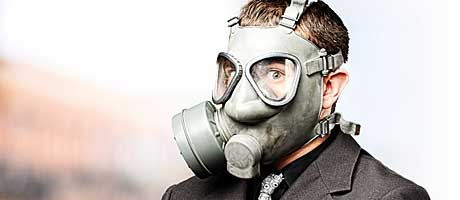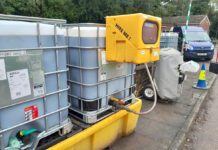
Duncan Mounsor explains how the science of smell can aid environmental monitoring.
ODOUR pollution might sound less serious than other forms of environmental contamination but it can be debilitating and have a truly negative impact on people’s quality of life. Even a well-run waste handling site or sewage treatment works can quickly run into problems if processes are stalled or important equipment fails.
As with all pollution, prevention is better than the cure. And the best way to prevent odours becoming a nuisance is to develop bespoke management strategies for individual sites. Effective management is underpinned by effective measurement. However, odour management has habitually been hindered by unscientific measurement techniques.
Environmental regulators traditionally collect samples and use olfactory panels, ‘human sniffers’, to assess sites that regularly receive complaints about odour pollution. But there are many variables – from treatment processes to prevailing weather conditions – that can influence the scale of the problem. It is not uncommon for a site to frequently veer between nuisance and acceptable levels of odour.
What’s more, there is inevitably a subjectivity factor when using olfactory panels. How do you define the exact moment when an acceptable odour becomes a nuisance? It is difficult to measure odours objectively and build an accurate picture over time.
This is set to change. With sophisticated ‘electronic nose’ equipment now available in the UK for odour monitoring, facilities can develop intelligence-led solutions to minimise odour pollution.
The first step is to compile an inventory of on-site odour sources, including their size and location. Monitoring the odour they produce enables potential problems to be identified, and these can be prioritised for attention. On a day-to-day basis, electronic nose technology can act as a safety net, identifying potential nuisance odours at an early stage and alerting site managers before they reach a level where they would cause human discomfort.
But this rapid response activity is just one element of a best practice approach to odour management. As data is gathered over a period of time, it can be overlaid with information about meteorological conditions. Other external factors that influence the dispersion of odours, such as the surrounding terrain, can also be taken into account. By marrying and analysing historical odour data with external factors, a predictive approach can be developed, drawing on prevailing seasonal meteorological conditions and ongoing weather forecasts.
with sophisticated ‘electronic nose’ equipment now available in the UK facilities can develop intelligence-led solutions to minimise odour pollution
Building a better understanding of the causes of odour problems means processes can be optimised to reduce the risk. This facilitates decision making and a ‘continuous improvement’ approach to odour management. It can also aid the development of high-performance, cost-effective mitigation strategies that enable precise and timely use of resources such as odour neutralising or masking chemicals.
Results analysis should also form an important part of the ongoing strategy. Performance can be assessed in terms of the over-all measurement of odours, the number of times per year that odours reach nuisance levels and the number of times potentially nuisance odours are nipped in the bud. It is important to log and track complaints from neighbouring residents, as well as instigating a follow-up procedure when complaints do happen.
Organisations in France, where the electronic nose was developed, are already benefitting from best practice approaches to odour management. Facilities that have used the technology as a component of well-planned strategies have seen significant cost savings through reduced use of chemicals. And in some cases, complaints from locals have dropped from an average of 26 per year to zero.
With a best practice approach, sites can control odour – rather than having odour control them.
Duncan Mounsor is sales and marketing director at Enviro Technology.






